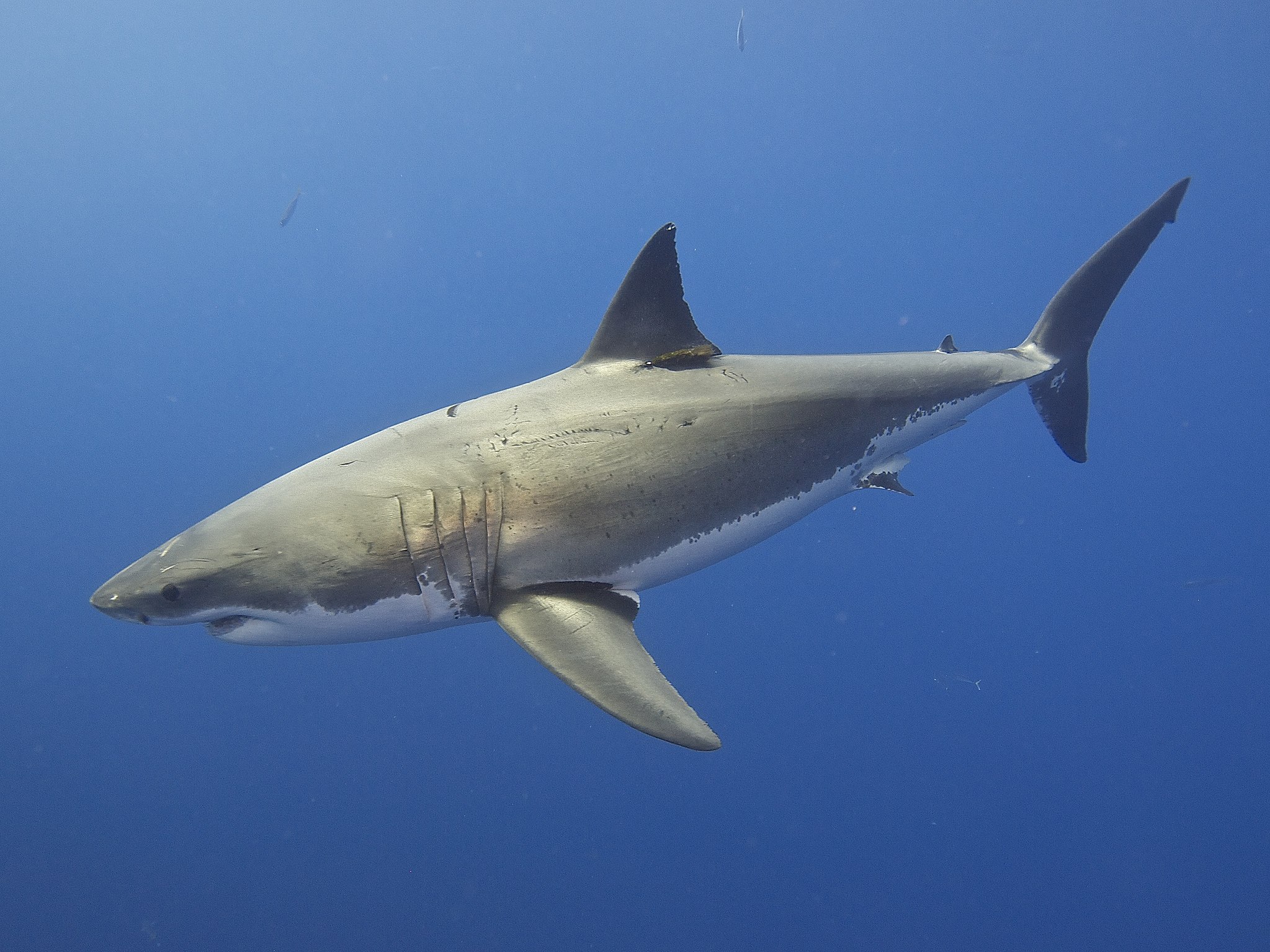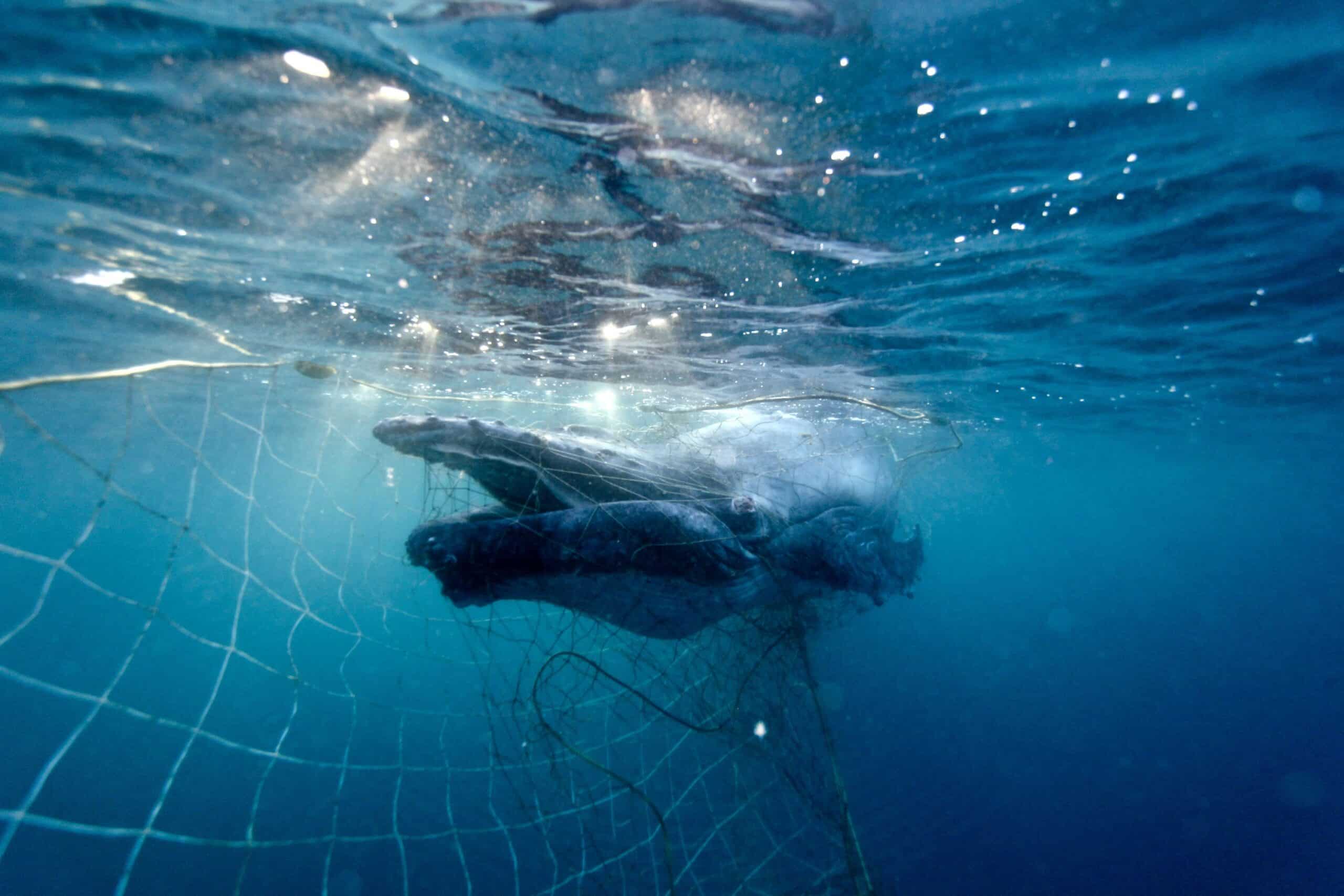Research shows that Australia’s great white sharks are highly related to each other and may consist of fewer than 500 breeding animals. SYDNEY, 24 June 2025: Latest research has found Australia’s great white shark population is much smaller than expected, increasing their vulnerability to further population threats. The population...
The first major update to the Shark Culling Impact Tracker has revealed the shocking capture of 139 more marine animals in shark nets and on lethal drumlines that span Queensland’s coastline since May 2021. Of these, 85 were killed.
The Tracker, developed by Humane Society International Australia and the Australian Marine Conservation Society, is updated with data from Queensland’s Department of Agriculture and Fisheries in order to shine a spotlight on the appalling reality that exists just below the surface of Queensland’s ocean waters as a direct result of the lethal shark culling of sharks. Though touted as a way to keep swimmers safe, nets and lethal drumlines provide only a false sense of security at a great cost to marine life.
In the two months since the Tracker was launched five dolphins have been captured by the shark culling program, an average of about 1 dolphin every 11 days, four of which were killed. A further 11 sea turtles, nine rays, and 114 sharks were caught in the nets and drumlines. Three turtles and three rays perished, while 75 sharks were killed. About half of all sharks caught since 2001 in Queensland’s shark culling program pose little risk to humans as they aren’t regarded as aggressive species.
In 2019, the Administrative Appeals Tribunal found nets and drumlines deployed in the Great Barrier Reef as ineffective for protecting swimmers from sharks, stating that shark culling had no impact on the risk of shark bite.
Queensland’s Department of Agriculture and Fisheries has begun to trial non-lethal alternatives that are more effective at reducing the risk of shark bite for swimmers—without adding to the mounting wildlife toll. Recently they announced the expansion of drone trials into Far North Queensland after successful trials in Southern Queensland. These trials are very welcome, but until non-lethal alternatives are fully implemented, HSI and AMCS will continue pushing for evidence-based approaches to beach safety, and keep counting the marine wildlife that suffers and dies in the nets and drumlines until they are removed.
Lawrence Chlebeck, marine biologist for Humane Society International Australia, said, “The number of animals we are seeing added to the Tracker in such a short amount of time is heartbreaking. It’s easy to put the suffering and death out of mind when it’s out of sight, so we want to show everyone exactly what it costs to keep using these ineffective shark control measures.
“Even if an animal doesn’t die when it’s caught in a net or on a lethal drumline, they suffer immensely. Just because they are released, doesn’t mean they survive.”
Dr Leonardo Guida, shark scientist for the Australian Marine Conservation Society, said: “Utilising non-lethal solutions like drones and personal shark deterrents, means we’re bringing beach safety up to modern-day standards and not killing marine wildlife in the process. The sooner the Queensland Government transitions to fully non-lethal strategy, the better it’ll be for beach-goers and the ocean alike.”
HSI and AMCS are currently running a joint initiative to end the use of lethal shark control methods in Queensland in favour of more effective non-lethal technologies. Please visit www.sharkchampions.org.au for more information.
Images and video are available here.


